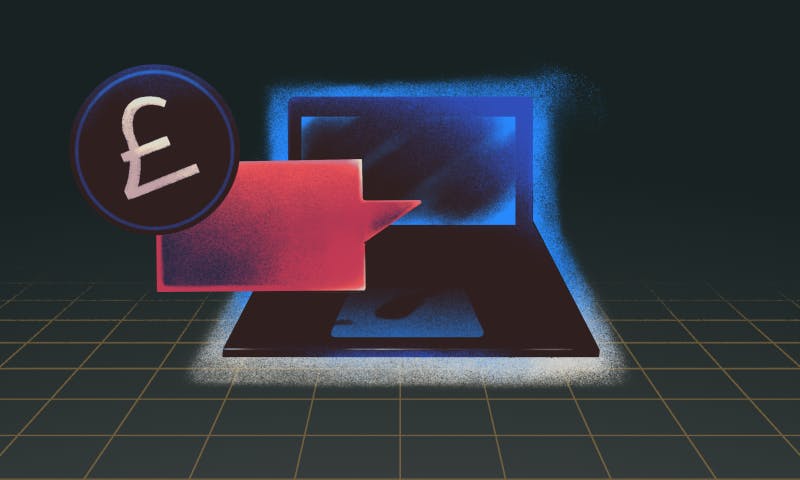Understanding the total addressable market (TAM) for a specific product or service is vital to the successful launch of a SaaS or any other business. But even past the startup stage, understanding this key concept and how to measure it will allow business owners to make more informed decisions about future products or the fate of existing ones. Despite the value this metric can bring to a business, relatively few business owners understand what it is or how to calculate it. In this post, we'll tell you everything you need to know about total addressable market and how you can use it to leverage new business opportunities, hit new markets, and drive your growth rate.
What is total addressable market (TAM)?
Total addressable market, also known as total available market, is the overall market demand for a product or service, and represents the absolute revenue potential if your company were to attain 100% of the market share. It helps companies and investors size up the commercial viability of a product or service and spend resources accordingly.
TAM is a relatively simple concept to understand, but you should be careful not to oversimplify. For example, if you are starting a restaurant, you may be tempted to say that everyone needs food, so your total market is every person in your metro area multiplied by the average cost of a dining ticket in that area. Chances are though, you're not serving food that fits everyone's tastes. So your TAM shrinks to include only those people who enjoy the cuisine you're serving. For the purposes of TAM, assume you have no competition. You are calculating the market value you would have if you cornered 100% of the market.
3 reasons TAM matters for a solid business strategy
We mentioned that many businesses don't understand or properly utilize this metric. However, it's essential for businesses to use this metric in order to estimate potential sales and revenue growth. As with many other business tools, those who do use the tools will get a leg up on the competition and see more growth. Let's look at three ways TAM matters to your business strategy.
1. Build your long term vision
Nobody can predict the future. But we can make educated guesses about the potential that various products and services have. Every good business owner has an idea of where they want to be in five or ten years. The path to get there isn't always so obvious. What is obvious, is that starting your journey with a tiny market size that already has a lot of competition isn't a great way to get to the finish line. Understanding demographic and market share will allow you to plan the steps your business takes to fulfilling its long-term vision to get the most distance out of each one.
2. Understand your market size
If you're past the planning stage, knowing your market size is still a valuable insight to have. If you've captured 1% of your total market, you've got plenty of room to grow. Investment in sales and marketing makes sense under those circumstances. However, if you have a smaller market and already have a fairly high share of it, the sky is no longer the limit. That doesn't mean you don't continue your marketing efforts, it just means you need to be a little more aware of how much room you have for growth.
3. Attract investors to drive growth
Investors aren't charities. When you approach an investor to obtain funds to grow your company, they want to see as little risk as possible. This is especially true of unproven startups, but even established businesses have to prove they've done their homework on the viability of the proposed expansion. Having an accurate assessment of the total available market for a product or service gives investors a better idea of how financially viable your proposal is.
5 key questions to answer in order to calculate TAM
Earlier, we gave an example of how a business owner might oversimplify their total addressable market calculation and come up with the wrong answer. Of course, even that example was an oversimplification. Getting an accurate view of your total addressable market size requires a bit more work than a few sentences can provide. Let's take a look at five questions you should be asking to ensure the number you come up with for TAM is as accurate as possible.
1. What is the target market?
It isn't very often that the target market for your product includes everyone. Although everyone eats, our fictional restaurant still had to narrow things down to get the actual target market it could reach. In fact, as we'll see later, it could narrow it down even more. Understanding exactly who will purchase your product is the only way you'll get an accurate estimate of how much that market is worth.
Keep in mind that your total addressable market will be larger than your target market. For example, our restaurant may want to target only customers that can afford high-priced meals. But those who can't regularly afford such luxuries may occasionally be able to. They aren't in the target market, but they are in the addressable market.
2. What industries can be sold to?
If you have a B2B product, then not accounting for all the industries your product may be of interest to will result in severely underestimating your total addressable market. A lot of times, a product may be developed with one industry in mind, and the creators never stop to examine how much broader the appeal could be. This is bad for TAM calculations, and bad for business.
3. What is the current competitive landscape?
This is important for a couple of reasons. Your total addressable market assumes you have a monopoly, so it isn't a direct part of the calculations. But knowing who else is in the space will help you modify your go-to-market approach and gather data for the calculations, if needed. It will also give you a better idea of how to interpret the TAM. A large, but saturated market might not be a good choice for business. A small, but under-served market segment might be.
4. What are the consumer profiles?
Market research doesn't stop with the size of the market. You also want to know what types of people will be purchasing your product. How much are they willing to pay? What affects that willingness? In the days of big data, you can glean all kinds of useful information to help grow your business by taking an in-depth look at your buyer personas. For the purposes of calculating TAM, knowing what value your target customers place on the types of goods and services you'll be offering can be important, depending on the calculation method you choose.
5. What does long-term market growth look like?
Market growth refers to the rise in demand for a product or service in a specific market. It's important to spend some time assessing your market’s growth potential. And though you can't predict the future, you can use trends in growth to give you some idea of where your total addressable market will be heading. Some indicating DTC trends you can track to gauge your market's growth include year-to-year industry-wide sales, number of customers, and type and size of purchases per customer.
3 ways to calculate total addressable market
Now that you've gathered the right information and asked the right questions, you can begin the work of actually calculating your total addressable market. As with many things in business, there are several ways to calculate your TAM. Each of them is presented below.
1. Take a top-down approach from industry benchmarks
Our restaurant example is how a top-down approach to calculating TAM works. The calculation started with everyone in the area who eats food. It was then narrowed down to the people who enjoy the type of cuisine that is served. Now we have an estimate of the number of people who may visit the restaurant, but we don't know what the value of that market is. Like in the original example, we can take the average value of a ticket to get that estimate. This approach typically uses industry research to get an estimated population.
2. Gather bottom-up insights from your business
The bottom-up approach is more reliable because you're doing and using your own research. The data is current and relevant to your own product or service.
When a business already exists, it can use its own data to calculate the TAM estimate. Whether this is as simple as the average ticket price or if there are many more variables involved, the data will be more accurate when it's generated from known and verifiable sources.
3. Use value theory & willingness to pay
This method depends on the estimated value the product or service provides customers and how that value can be reflected in the price. This approach is typically used to calculate TAM when launching a new product or category, new features, or cross-selling to an existing customer base. Market research is needed to estimate what your target customers would be willing to pay for your product.
Total addressable market FAQ
What determines an addressable market?
The addressable market is determined by the number of potential customers in an area. If every one of those people were to purchase from you, the combined value of those purchases would be the addressable market.
How big should my total addressable market be?
This depends on several factors. Each industry has slightly different market viability sizes. On average, it's reasonable, but ambitious, to assume you can capture 2% of the market. If you capture 2% of the market, what will your revenue be? Combined with your expenses, this will let you know how viable your market is.
What is serviceable obtainable market (SOM)?
The TAM calculation leaves out a lot of factors. For one, it assumes we have a monopoly and that every possible customer will buy from us. This isn't realistic. The serviceable obtainable market (SOM) takes into account competition, pricing, geography, and many more factors to determine more realistic market opportunities. It's the total addressable market that you will realistically reach.
What is a good TAM for a startup?
Figuring out a good TAM for a startup is nearly identical to the more general answer above. The key difference is that your startup is going to need time to start bringing in money. The amount of working capital you have to cover the bills while you wait for that to happen, and the amount of competition to overcome are going to play larger roles in this calculation. However, many aim for a TAM of $10 to $100 million.




